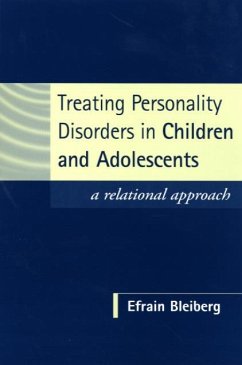While personality disorders traditionally have been conceptualized only in adults, it is not uncommon to encounter children and adolescents with the classic diagnostic signs. Youngsters with personality disorders may come across as strikingly arrogant, defiant, and manipulative, yet their demeanor typically masks devastating experiences of vulnerability and pain. This groundbreaking volume offers a framework to make sense of childhood personality disorders, distinguish them from more frequently diagnosed childhood conditions, and respond appropriately to the challenges this population presents. Interweaving neurobiological, psychodynamic, and developmental perspectives, Efrain Bleiberg presents an effective treatment model grounded in research and extensive clinical experience. All therapists working with children and adolescents will find vital insights and strategies in this lucidly written book. The author first explores the nature and clinical presentation of childhood personality disorders. Diverse theoretical and empirical literatures are integrated to show how a combination of constitutional vulnerability, attachment difficulties, and trauma may impair the child's capacity to interpret and respond to the world in human, meaningful terms. Elucidated are the processes by which specific personality disorders develop when children--and caregivers--become trapped in rigid, maladaptive patterns of feeling, coping, and relating. The book then takes the clinician step-by-step through offering multimodal interventions that incorporate individual psychotherapy, family treatment, and pharmacotherapy. Compelling case vignettes and transcripts bring to life the inner worlds of thesefrightened young people and the clinicians who work with them, showing how treatment can help achieve intrapsychic change, free inhibited development, and modify the child's family context. Emphasizing the importance of the therapeutic alliance, the book gives particular attenti
Hinweis: Dieser Artikel kann nur an eine deutsche Lieferadresse ausgeliefert werden.
Hinweis: Dieser Artikel kann nur an eine deutsche Lieferadresse ausgeliefert werden.








